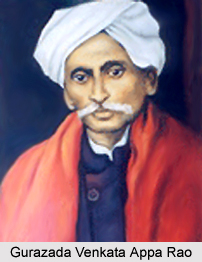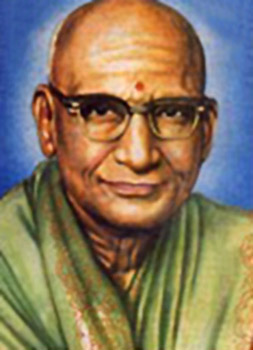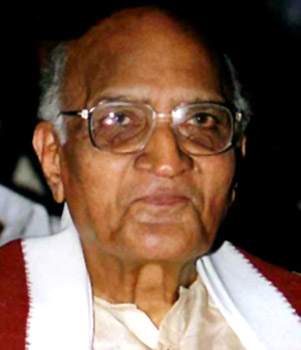About Drama in Telugu Literature
 Drama in Telugu Literature was one of the least developed forms in Telugu literature and got off to a rather late start. Many indigenous (desi) dramatic modes such as yakshaganam, veedhi natakalu, and bhagavatha melalu were in vogue in Andhra, but these did not develop into sustained theatrical movements. Till about the 1860s, there is no history of dramatic writing in Telugu. Korada Ramachandra Sastry`s Manjari Madhukareeyam (1860) is the first original drama to be written in Telugu, but most of the early plays that appeared in Telugu were translations either from Sanskrit language or from English.
Drama in Telugu Literature was one of the least developed forms in Telugu literature and got off to a rather late start. Many indigenous (desi) dramatic modes such as yakshaganam, veedhi natakalu, and bhagavatha melalu were in vogue in Andhra, but these did not develop into sustained theatrical movements. Till about the 1860s, there is no history of dramatic writing in Telugu. Korada Ramachandra Sastry`s Manjari Madhukareeyam (1860) is the first original drama to be written in Telugu, but most of the early plays that appeared in Telugu were translations either from Sanskrit language or from English.
Translations from Sanskrit began with Kokkonda Venkataratnam`s Narakasura Vijaya Vyayogamu (1872), followed by translations of work of several renowned Sanskrit dramatists, such as Kalidasa, Bhasa, Bhavabhuti, Sudraka and Harsha. Alongside appeared Telugu translations of English plays as well. In 1890, Kandukuri translated Comedy of Errors under the title Chamatkara Ratnavali, and it was staged by his students. Among the other Western playwrights to be rendered into Telugu were Goldsmith, Sheridan, Moliere, and Gibbon. The influence of these translations on Telugu drama was rather limited, but the newly formed English Dramatic Associations aroused keen interest in play performance among Telugus. Besides, Parsi and Dharwar drama troupes touring Andhra around 1880 staged plays in Hindi that were enthusiastically received. This also gave a boost to dramatic writing in Telugu. Some of the important Telugu dramatic associations to be founded around the turn of the century were Sarasavinodini Sabha, Sumanorama Sabha, Surabhi Company, and Hindu Nataka Samajam. These contributed immensely to the emergence of Telugu drama into a distinct genre and the popularization of performance in Andhra.
The early phase in Telugu drama is marked by an adaptation of mythological plots for theatrical performance. Lord Rama`s exemplary life, Lord Krishna`s pranks, and the strife between the Pandavas and Kauravas of Mahabharat were among the popular themes. The most important writer of this phase was Dharmavaram Ramakrishnamacharyulu, the founder of Sarasavinodini Sabha. He wrote over 30 plays and actively participated in the performance of these plays. He blended the conventions of Sanskrit classical drama with those of the Western theater and produced several stageable plays. His Sarangadhara (1897), with its tragic closure, breaks the conventions of ancient Indian aesthetics and marks a revolutionary change in Telugu drama. In 1897, Vedam Venkataraya Sastry brought yet another innovation in his play Pratapa Rudreeyam by introducing character-specific speech for the first time. Prominent among the other writers of this period are Kolachalam Srinivasa Rao and Vaddadi Subbarayudu.
Telugu drama entered a new phase with the staging of Gurazada Venkata Appa Rao`s Kanyasulkam, the first social play in 1892. The play had several successful performances in the state before it was published in 1897. Gurazada`s work can be placed in the tradition of Prahasanam, one of the ten dramatic modes used in Sanskrit literature. Drawing from these sources, Gurazada wrote the first full-length social play dealing with one of the most urgent issues of his time-bride price, the practice of selling minor girls to old men. Gurazada`s play becomes a landmark in the evolution of twentieth-century drama in several ways; the theme is secular and not mythological, characters are fully developed and lifelike, and the language used is the simple, everyday idiom. Above all, the gentle and sophisticated humour; Gurazada brought to dramatic dialogue and situation made it an unprecedented success both on stage and in print. The trend started by Gurazada, however, found no immediate followers, and the Telugu social play as a sub-genre took long to emerge. Kallakuri Narayana Rao revived the social play almost two decades later in his Varavikrayam (1921) and Madhuseva, (1926).
In the first two decades of the twentieth century verse dramas continued to dominate the scene, and mythological plays retained their prime position. Among the most popular plays of this period are Chilakamarthi Lakshminarasimham`s Gayopakhyanam (1909) and Panuganti Lakshmimarasimha Rao`s Paduka Pattabhishekam (1909) and had several successful performances all over the state. Some of the most popular mythological plays based on the Mahabharat tales include Pandavodyoga Vijayam (1911) by Tirupathi Venkata Kavulu, Satya Harischandreeyam (1922) by Balijepalli Lakshmikantham, and Sri Krishna Tutabharam (1922) by Mutharaju Subba Rao.
Another form of verse drama that developed into an important trend during the twentieth century is the historical drama. Around this time, a number of historical plays apparently dealing with centuries of Islamic rule were actually camouflaging resentment against the British rule. Sripada Krishnamurthy`s Bobbiti Yudhdham (1908), Kolachalam Srinivasa Rao`s Rama Raju (1920), and Duvvuri Rami Reddy`s Kumbha Rana (1921) exemplify this trend. Kopparapu Subbarao`s Roshanara (1921), a very successful yet controversial play, triggered a sectarian stir and was banned. The era of historical plays, which began around 1910, thus came to a halt by 1925.
The historical drama of the earlier period began to acquire echoes of political innuendo, and political drama emerged as an important trend in the 1920s and 1930s. There was a strong sentiment to re-create a national history to create a national identity in the face of the anti-colonial sentiments. Some of the earliest plays to contain political messages in poetic dialogue were Kallakuri Narayana Rao`s Padmavyuham (1919) and Damaraju Pundarikakshudu`s Gandhiji Vijayam (1921). Damaraju`s Panchata Parabhavam (1922), Somaraju Ramanuja Rao`s Tilak Rayabaram (1921) and Budhdhavarapu Pattabhiramayya`s Matrudasya Vimochanam (1924) exemplify this trend. There was a rereading of the history of Andhra as well, as seen in Grandhi Venkata Subbaraya Gupta`s Andhramatha (1913) and Kavuluri Hanumantha Rao`s Andhra Patakam (1939).
The next set of political plays came around the time of the Quit India movement (1942), with which the Indian independence movement entered its final and most forceful phase. The years 1943-46 witnessed the publication of a large number of plays revolving round the theme of political liberation- Vedanlakavi`s Telugu Talli (1940), Utukuru Satyanarayana Rao`s Sapa Vimochanam (1943), Jasti Venkata Narasayya`s Congress Vijayam (1946), and Pattigodupu Raghava Raju`s Delhi Kota (1946) dramatize the political struggle for freedom and celebrate the liberation of the Indian people. The purpose of these plays was to spread the message of liberation to common folk and consolidate the nationalist movement.
The progressive movement in the 1940s provided further impetus for the political drama. The Praja Natya Mandali (people`s theatre movement) provided the forum for the performance of revolutionary plays. This movement adopted folk forms such as burrakatha (storytelling) to reach out to the masses with their political messages.
Modernism in the Telugu drama basically implies secular dramatic themes, use of contemporary dialogues and technical experimentation. Moreover the impact of Western Literature was an important feature. Rajamannar`s Tappevaridi (1929), written under the influence of Ibsen, is considered the first modern play in Telugu. It called age-old traditions into question and underscored the need for a re-evaluation of traditional socio-cultural institutions. The stage became a forum for an intellectual debate of social problems in this phase. In the 1940`s and 1950`s, the theme of the various dramatic works further widened. They addressed more contemporary social issues such as class structure, gender discrimination etc. However, following the 1960`s, Telugu drama underwent a steady decline due to the growing popularity of television and film.
Revolutionary Drama in Telugu Literature
 Revolutionary Drama in Telugu literature emerged sometime in the 1920`s and 1930`s. The historical drama of the early twentieth century began to acquire echoes of political suggestions and political drama emerged as an important trend in the 1920s and 1930s. Some of the earliest plays to contain political messages in poetic dialogue were Kallakuri Narayana Rao`s Padmavyuham (1919) and Damaraju Pundarikakshudu`s Gandhiji Vijayam (1921). The writers often used historical or mythological frameworks to represent contemporary reality into an allegorical form. Damaraju`s Panchata Parabhavam (1922), Somaraju Ramanuja Rao`s Tilak Rayabaram (1921), and Budhdhavarapu Pattabhiramayya`s Matrudasya Vimochanam (1924) exemplify this trend. Under the impact of the widespread anti-colonial movement and the upsurge of a nationalist spirit, the writers felt the need for re-creating a national history and sculpting a national identity. This accounts for a fresh renewal of interest in historical themes, which provided the suitable ground for turning patriotic fervour and nationalist emotions into dramatic form. Sripada Kameswara Rao`s Kalapahad (1913), Muttaraju Subba Rao`s Chandragupta (1932), Viswanatha Satyanarayana`s Venaraju (1934), and Gundimeda Venkata Subba Rao`s Khilji Rajya Patanam (1935) form a part of this development. There was a re-reading of the history of Andhra as well, as seen in Grandhi Venkata Subbaraya Gupta`s Andhramatha (1913) and Kavuluri Hanumantha Rao`s Andhra Patakam (1939).
Revolutionary Drama in Telugu literature emerged sometime in the 1920`s and 1930`s. The historical drama of the early twentieth century began to acquire echoes of political suggestions and political drama emerged as an important trend in the 1920s and 1930s. Some of the earliest plays to contain political messages in poetic dialogue were Kallakuri Narayana Rao`s Padmavyuham (1919) and Damaraju Pundarikakshudu`s Gandhiji Vijayam (1921). The writers often used historical or mythological frameworks to represent contemporary reality into an allegorical form. Damaraju`s Panchata Parabhavam (1922), Somaraju Ramanuja Rao`s Tilak Rayabaram (1921), and Budhdhavarapu Pattabhiramayya`s Matrudasya Vimochanam (1924) exemplify this trend. Under the impact of the widespread anti-colonial movement and the upsurge of a nationalist spirit, the writers felt the need for re-creating a national history and sculpting a national identity. This accounts for a fresh renewal of interest in historical themes, which provided the suitable ground for turning patriotic fervour and nationalist emotions into dramatic form. Sripada Kameswara Rao`s Kalapahad (1913), Muttaraju Subba Rao`s Chandragupta (1932), Viswanatha Satyanarayana`s Venaraju (1934), and Gundimeda Venkata Subba Rao`s Khilji Rajya Patanam (1935) form a part of this development. There was a re-reading of the history of Andhra as well, as seen in Grandhi Venkata Subbaraya Gupta`s Andhramatha (1913) and Kavuluri Hanumantha Rao`s Andhra Patakam (1939).
The next set of political plays came around the time of the Quit India movement (1942), with which the Indian independence movement entered its final and most forceful phase. The years 1943-46 witnessed the publication of a large number of plays revolving round the theme of political liberation - Vedanlakavi`s Telugu Talli (1940), Utukuru Satyanarayana Rao`s Sapa Vimochanam (1943), Jasti Venkata Narasayya`s Congress Vijayam (1946), and Pattigodupu Raghava Raju`s Delhi Kota (1946) dramatize the political struggle for freedom and celebrate the liberation of the Indian people. The purpose of these plays was to spread the message of liberation to common folk and consolidate the nationalist movement.
The progressive movement in the 1940s provided further impetus for the political drama. The Praja Natya Mandali (people`s theater movement) provided the forum for the performance of revolutionary plays. Sunkara Satyanarayana and V. Bhaskara Rao jointly brought out two plays: Mundadugu (1945) and Ma Bhoomi (1947), dealing with the atrocities of zamindars and the autocratic rule of the Nizam of Hyderabad, respectively. This movement adopted folk forms such as burrakatha (storytelling) to reach out to the masses with their political messages. The establishment banned the performance of these plays; besides, the propagandist slant of these works lost the movement its audiences. Thus this phase gradually came to an end.
History of Modern Drama in Telugu Literature
 A study of the history of modern drama in Telugu Literature brings forth the fact that it took a rather long time to emerge. The earliest departure from traditional forms of dramatic works was seen in Gurazada Venkata Appa Rao`s Kanyasulkam which marked the beginning of a new era. However, the traditional forms continued to dominate the scene, and modern drama as an established form took long to emerge. It requires to be stated here that when talking about secularism in the context of Telugu drama there are certain things which need to be kept in mind. Modernisation implies the secularization of dramatic subjects, imparting a contemporary tone to the dialogues and formal and technical experimentation. A major impact of modern drama has been the impact of Western literature. The newness of Ibsen`s work impressed the Telugu playwrights to such an extent that they sough to revolutionize playwriting and play production along the lines of Ibsen`s drama. Writers tried to replace the conventional lies of the stage with some necessary though bitter truths of life and bring the plays close to actual life.
A study of the history of modern drama in Telugu Literature brings forth the fact that it took a rather long time to emerge. The earliest departure from traditional forms of dramatic works was seen in Gurazada Venkata Appa Rao`s Kanyasulkam which marked the beginning of a new era. However, the traditional forms continued to dominate the scene, and modern drama as an established form took long to emerge. It requires to be stated here that when talking about secularism in the context of Telugu drama there are certain things which need to be kept in mind. Modernisation implies the secularization of dramatic subjects, imparting a contemporary tone to the dialogues and formal and technical experimentation. A major impact of modern drama has been the impact of Western literature. The newness of Ibsen`s work impressed the Telugu playwrights to such an extent that they sough to revolutionize playwriting and play production along the lines of Ibsen`s drama. Writers tried to replace the conventional lies of the stage with some necessary though bitter truths of life and bring the plays close to actual life.
P. V. Rajamannar`s Tappevaridi (1929), written under the influence of Ibsen, is considered the first modern play in Telugu. This play dramatizes the liberation of a much-harassed woman from the chains of an unhappy marriage. It called age-old traditions into question and emphasised the need for a re-evaluation of traditional socio-cultural institutions. P. V. Rangaram`s Dampathulu (1931) and Bellary Raghava`s Saripadani Sangathulu (1938) both belong to the same trend and center round marital and familial problems. During this phase, the stage became a platform for an intellectual debate of social problems.
One of the forms of this theatrical revolt was a new brand of mythological plays that emerged around this time. Muddu Krishna`s Asokamu (1934), Chalam`s Harischandra (1937), and Amancharla Gopala Rao`s Hiranya Kasipudu (1937) attempt revisionist reinterpretations of mythological stories. However, these plays could not be staged for a long time, because people considered it a blasphemy to meddle with the sacred texts.
The revival of Andhra Nataka Kala Parishad in 1941 was an important attempt to sustain the theatre movement. The Parishad conducted regular competitions and made awards to talented playwrights. Acharya Atreya, Muddu Krishna, and D. V. Narasaraju established their credentials through these competitions. In the 1940s and 1950s, the thematic range of plays widened significantly, and a realistic drama addressing contemporary social issues such as caste system, class structure, and gender discrimination emerged as the dominant trend of this period. Acharya Atreya`s NGO (1949) dramatized the problems of a meagrely paid clerk, and its success on the stage proved that the ordinary and the commonplace could be turned into powerful drama. Kopparapu Subba Rao`s Inapa Teralu (1950), Kodali Gopala Rao`s Peda Raithu (1952), and Pinisetti Srirama Murthy`s Kulam Lent Pillalu (1951) are all written in the same vein. Rachakonda Viswanatha Sastry`s Tiraskriti (1957) and Bellamkonda Ramadasu`s Panjaram (1956) deal with the emancipation of women and address specific women`s issues. Buchibabu`s Atmavanchana (1951) and Bhamidipati Radhakrishna`s Keertiseshulu (1960) focus on the paradoxes of the human condition and dramatize psychological conflicts and complexes.
Telugu drama thus tapped a variety of thematic tropes and widened the horizons of its concern by the end of the 1960s, after which it described a steady decline. The growing popularity of television and film practically rang the death knell of Telugu drama. Despite sporadic efforts to revive and sustain Telugu theatre, drama in Telugu has not been able to secure a significant place either in Telugu literature or in the tradition of performance. Andhra University established an open-air theatre and later started a Department of Theatre Arts. So did the Osmania University subsequently. The efforts of the university departments and the state-financed institutions have barely managed to keep the tradition alive, but a total lack of popular patronage blocks the revival of drama in Andhra. What revival there is in recent Telugu drama comes mainly from Western enthusiasts but has not met with much success. Very few good plays appeared in the last couple of years of the twentieth century. These include R. S. Ramaswami`s Galivana (1968), N. R. Nandi`s Maro Mohenzadaro (1969), Rentala Gopala Krishna`s Rajani (1972), Arudra`s Radari Banglow, and Gollapudi Maruthi Rao`s Kallu merit special mention. These plays show the influence of the Western avant-garde movement and ably adapt the new dramatic techniques to Indian themes.
It may be noted that Telugu drama is more than a century old now. There have been several significant changes in the themes and forms of drama in these 100 years, but the essential structure of the play has not altered. Mythological subjects were replaced by social and secular themes; verse yielded place to prose, which, in the course of time, turned into colloquial idiom; the long play with elaborate scenes and several characters gradually became condensed into short and often one-act plays; new modes of presentations, including realist, symbolic, and expressionist techniques, were attempted, but no new forms with indigenous roots had emerged in Telugu literature for a long time.



















